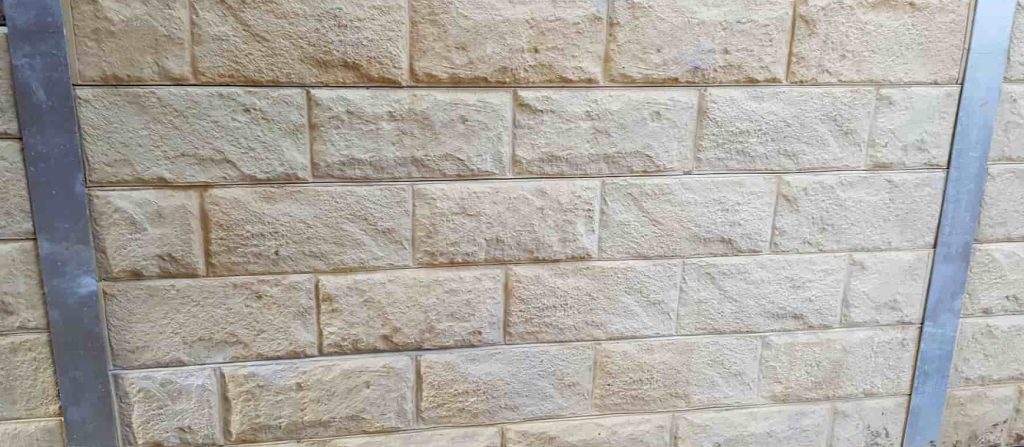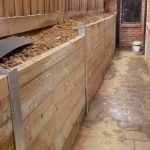Introduction
In the intricate world of building and construction, project management functions as the foundation of successful endeavors. This is particularly real in specialized fields like retaining wall building and construction, where knowledgeable specialists should link engineering proficiency with creative analytical to attain ideal results. The expression "Successful Project Management by Experienced Retaining Wall Professionals" encapsulates the essence of what it takes to guarantee that these projects are finished on time, within budget, and to the highest requirements of quality.
Retaining walls play an important role in stabilizing soil and avoiding disintegration. Whether they are made from timber sleeper, concrete sleeper, or even H beam, their design and construction need meticulous planning and execution. This article will look into numerous aspects of project management particular to retaining wall construction, highlighting the value of professionalism and ability in accomplishing success.
Successful Task Management by Competent Retaining Wall Contractors
Successful task management in retaining wall jobs depends upon several key aspects: correct planning, experienced labor, reliable interaction, and extensive quality assurance. A knowledgeable contractor can browse these complexities effectively, guaranteeing that every stage of the task aligns with both client expectations and regulative requirements.
Understanding Retaining Walls
What Are Maintaining Walls?
A retaining wall is a structure created to keep back soil or rock from a structure website. They are available in various products-- timber sleeper, concrete sleeper, or steel structures like H beams-- each offering distinct benefits based on the job's requirements.
Types of Maintaining Walls
Gravity Walls: These depend on their weight to resist pressure from behind. Cantilever Walls: These use leverage to stand against lateral forces. Sheet Stack Walls: Suitable for soft soils; they interlock vertical sheets driven into the ground. Anchored Walls: Stabilized with cable televisions or rods protected in the soil behind them.The Function of Skilled Contractors
Why Pick Professional Contractors?
Choosing professional contractors for your retaining wall project makes sure that you receive skilled suggestions tailored to your particular needs. From selecting suitable materials like timber or concrete sleepers to understanding local guidelines, their competence proves invaluable.
Expertise in Material Selection
Different jobs demand different products:
- Timber Sleeper Walls: Typically used for ornamental purposes; visually pleasing however less durable. Concrete Sleeper Walls: More robust than lumber; perfect for bigger jobs requiring significant strength. H Beam Structures: Outstanding for durable applications where additional assistance is necessary.
Planning Stage: The Heartbeat of Task Management
Setting Clear Objectives
Establishing clear objectives http://danteknmj052.almoheet-travel.com/step-by-step-retaining-wall-setup-process-explained sets the phase for success. What do you desire your retaining wall to attain? Disintegration control? Visual appeal? Structural stability? Specifying these goals early assists guide decision-making throughout the project.
Budgeting Wisely
Creating a realistic budget plan is vital for any job's success. Consist of expenses for materials (like timber sleeper or concrete sleeper), labor, equipment rental, allows, and unanticipated contingencies.

Communication Techniques for Success
The Importance of Open Communication
Effective communication among staff member fosters a collective environment favorable to problem-solving and innovation. Routine meetings must be scheduled at key turning points to assess development and resolve any concerns promptly.
Utilizing Innovation for Better Communication
Today's innovation can boost communication considerably:

- Project management software application can track timelines and budgets efficiently. Mobile apps can assist in real-time updates amongst employee on-site.
Risk Management Techniques
Identifying Potential Dangers Early On
Understanding prospective dangers-- including weather conditions impacting excavation work or delays in material supply-- is crucial for preserving timelines and budgets.
Developing Mitigation Strategies
Once threats are determined, developing strategies to alleviate them is vital. This may include having backup providers or scheduling work during seasons with beneficial weather conditions.
Execution Stage: Bringing Strategies to Life
Quality Control Procedures Throughout Construction
Maintaining high standards during building ensures durability and durability:
- Regular assessments need to be carried out at each phase. Quality products must be sourced-- whether you opt for timber sleeper or concrete alternatives-- to make sure structural integrity.
Efficient Resource Management
Skilled contractors stand out at resource management-- optimizing labor hours while reducing waste is essential to staying within budget and schedule.
Post-Construction Stage: Final Touches & Upkeep Planning
Conducting Thorough Inspections After Completion
Final examinations should validate that everything meets both customer expectations and regulative requirements before moving forward with any landscaping or finishing touches.
Creating a Maintenance Prepare for Longevity
Educating customers on how best to preserve their brand-new maintaining walls is similarly important as the construction itself. Routine maintenance checks can prevent future concerns associated with erosion or structural failure.
FAQs
1. What kinds of products are best suited for keeping walls?
The option depends upon your specific needs:
- For looks: Timber sleepers may be preferable. For toughness under pressure: Concrete sleepers are an exceptional option.
2. How long does it take to build a maintaining wall?
The timeline varies based on size and complexity but usually ranges from numerous days to a number of weeks.
3. Do I require an authorization for constructing a retaining wall?
Yes, numerous municipalities need licenses due to zoning laws focused on avoiding water overflow issues.
4. Can I build a retaining wall myself?
While do it yourself jobs can be rewarding, hiring professional specialists frequently ensures security, compliance with regulations, and quality workmanship.
5. How do I know if my soil requires stabilization?
Signs include persistent flooding after rain or visible erosion in time-- professional assessments can offer clarity here.

6. What upkeep do maintaining walls require?
This includes regular examinations for cracks or bulging areas as well as guaranteeing drainage systems remain clear of debris.
Conclusion
Navigating the intricacies connected with "Effective Job Management by Knowledgeable Retaining Wall Specialists" needs an understanding of engineering concepts integrated with useful experience in managing diverse groups successfully. By stressing appropriate preparation, knowledgeable labor choice-- consisting of options between timber sleeper and concrete sleeper alternatives-- and rigorous interaction methods throughout all phases-- from initial planning through post-construction upkeep-- you set yourself up not simply for conclusion however likewise long-lasting success in guaranteeing structural stability versus nature's difficulties!
In short, whether you're a hopeful do it yourself lover checking out self-built solutions or a skilled home designer looking for professional assistance-- welcoming these principles will certainly lead you towards more effective ventures in building reputable keeping walls!